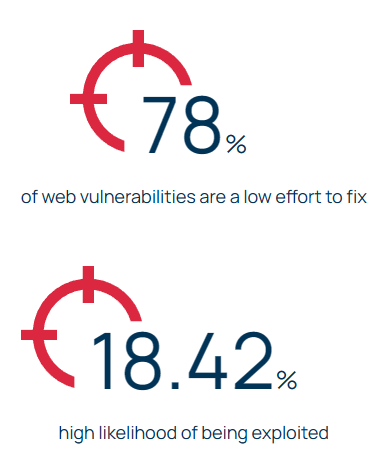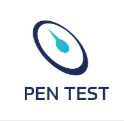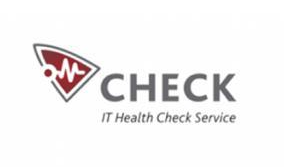
Cybersecurity Basic for the Crypto Currency Investors
Reality with regards to cryptographic money exchanging is that it isn’t the make easy money course that numerous unpracticed individuals trust and trust it to
We are creative, ambitious and ready for challenges! Hire Us
Detailed web app pen testing from OSCP & CREST certified security experts.

Get a fast web app pen test quote
Expert web app security testing assesses authenticated and unauthenticated web apps and APIs.
CyberPentesting penetration testers are independently qualified by industry-recognised certification bodies such as CREST.
Our simple to use dashboard-driven platform prioritises test results and gives you key remediation guidance.
Discover new security flaws and protect your business 24/7 with continuous security testing.
Web application penetration testing is used to test websites and their features by safely simulating a cyber attack. Web app pen testing uses the same up-to-date technology that’s used by real-world attackers to critically assess security vulnerabilities, weaknesses and technical misconfigurations in your web apps and APIs. Regular application pen testing is the cornerstone of any modern security strategy and is vital for keeping your online presence protected against data breaches.
CyberPentesting pen testers use their expertise in how to penetration test web applications to carry out static source code reviews such as SAST, and Dynamic Application Security Testing (DAST). DAST simulates an attack on the application when it’s running, meaning we can detect security weaknesses that only occur under certain conditions or operating scenarios. DAST and SAST are integral parts of securing your software development lifecycle (SDLC).


CyberPentesing’s CREST-certified penetration testers will carefully analyse all aspects of your web app and API to methodically uncover your security weaknesses. Every test follows industry best practices, such as OWASP, and is designed to protect what matters most to your business. CyberPentesing’s comprehensive after-action reports provide both an easy-to-understand executive summary and a vital technical breakdown.
We understand how dynamic the threat landscape is, which is why we offer 12-months of free vulnerability scanning on up to 8 IP addresses when you book a web app pen test.
Web application penetration testing methodology models different attack vectors. Bulletproof recommends a blend of authenticated and unauthenticated testing to ensure all security risks are discovered and documented.
Authenticated (aka white box testing) pen tests analyse the security of your web app from the perspective of an attacker who has breached the external security or phished valid credentials. This is a more in-depth test and shows the real damage a successful cyber attack could cause.
Unauthenticated web app testing, or ‘black box testing’ models what kind of damage a cyber criminal could do without having access to valid user credentials. This type of testing is useful for identifying vulnerabilities that can be exploited by anyone who has access to the web app, such as a login page.
API penetration testing is a vital component to include if your web app uses an application programming interface. It’s best practice to test your APIs in addition to the rest of your web apps, though API testing is often covered separately from the scope of a web app penetration test.
Top 10 most common web application vulnerabilities we have found when pen testing:

Most penetration testing follows a 6-step lifecycle:
Based on your defined goals, we’ll work with you to develop a tailored testing strategy.
In this reconnaissance stage, our experts use the latest groundbreaking techniques to gather as much security information as possible about the web apps and sites in the remit.
Our penetration testers use the latest security tools and industry knowledge to carry out a detailed analysis, uncovering exactly what is making your critical assets vulnerable to attack.
Using a range of custom-made exploits and existing software, our web app penetration testers will test all external and internal-facing systems without disrupting your business.
The team will determine the value of the compromised targets by trying to elevate privileges and pivot to other systems and networks. All compromised systems will be thoroughly cleaned of any scripts.
Our security team will produce a comprehensive report with their findings. Once received, we’ll invite you for a collaborative read through. You’ll have the opportunity to ask questions and request further information on key aspects of your business.


If you’re interested in our penetration testing services, get a free, no obligation quote today by filling out the form below.
A web application penetration test is a comprehensive security review where our team of specialised and accredited pen testers takes on the role of a cyber criminal. They’ll attempt to uncover and exploit security vulnerabilities and misconfigurations in your website or a specific web application. Web application penetration testing provides vital information on how to secure your web app and, ultimately, helps keep your organization secure online.
Whilst all web app penetration tests have the same goal of uncovering security weaknesses, there are different areas to consider:
API tests are a vital component to include if your web application has an API. Penetration testing a web app’s API uses slightly different tools, and techniques. It is often covered separately from the scope of a web app test.
CyberPentesting recommends a blend of all three testing types to get the most value from your penetration testing engagement and understand all the risks.
CyberPentesting believes in working to the very best standards, so all our web application tests include the Open Web Application Security Project (OWASP) Top 10 vulnerabilities as a minimum. We use a blend of advanced automated tools and manual expertise to uncover security weaknesses. This includes code injection, broken authentication, misconfigurations, XSS, and much more.
To scope a web application penetration test and for an organisation to get the most value out of the test, the tester would first need to establish the rules of engagement and what the end goal is for the web app pen test.
A scope would include gathering as much information about the target as possible, identifying all the web applications that require testing, and whether the test will be authenticated or unauthenticated.
The duration of a web application penetration test will be determined by the size and complexity of the scope. For example, the greater the number of applications to test, the longer the web app pen test will take. Once the pen tester has understood the business, the number of applications to be assessed, and the desired outcomes of the web app pen test, the tester will then be able to assign a timeframe for the duration of the test.

Reality with regards to cryptographic money exchanging is that it isn’t the make easy money course that numerous unpracticed individuals trust and trust it to

Cloud Security Position The board (CSPM) implies the procedures, instruments, and practices expected to stay aware of the security position of cloud conditions. As affiliations

Online protection has developed alongside innovation and data frameworks to turn into a pivotal part of the contemporary world. In any case, the advancement of




